Jmsconn - 無標題

More Posts from Jmsconn and Others

The Big Dipper
by: VegaStar Carpentier

Wide-Field Collision

2019 October 17
Moons of Saturn Image Credit: Cassini Imaging Team, SSI, JPL, NASA
Explanation: On July 29, 2011 the Cassini spacecraft’s narrow-angle camera took this snapshot and captured 5 of Saturn’s moons, from just above the ringplane. Left to right are small moons Janus and Pandora respectively 179 and 81 kilometers across, shiny 504 kilometer diameter Enceladus, and Mimas, 396 kilometers across, seen just next to Rhea. Cut off by the right edge of the frame, Rhea is Saturn’s second largest moon at 1,528 kilometers across. So how many moons does Saturn have? Twenty new found outer satellites bring its total to 82 known moons, and since Jupiter’s moon total stands at 79, Saturn is the Solar System’s new moon king. The newly announced Saturnian satellites are all very small, 5 kilometers or so in diameter, and most are in retrograde orbits inclined to Saturn’s ringplane. You can help name Saturn’s new moons, but you should understand the rules. Hint: A knowledge of Norse, Inuit, and Gallic mythology will help.
∞ Source: apod.nasa.gov/apod/ap191017.html




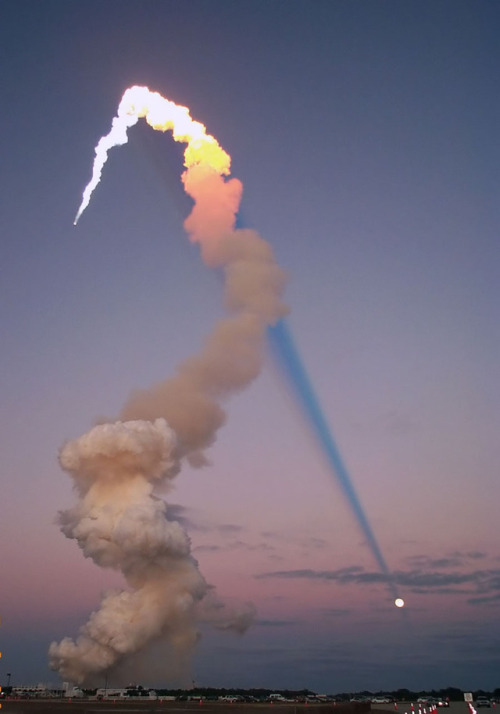
In early 2001 during a launch of Atlantis, the Sun, Earth, Moon, and rocket were all properly aligned for this photogenic coincidence.
Image Credit: Pat McCracken, NASA
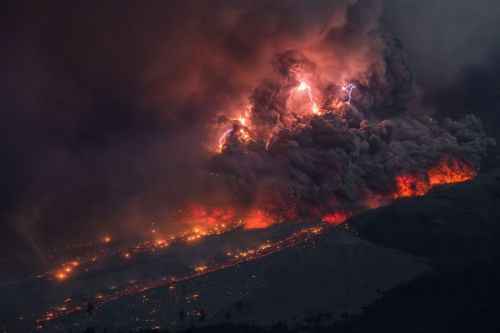
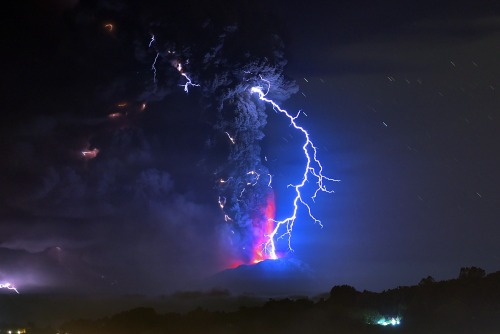
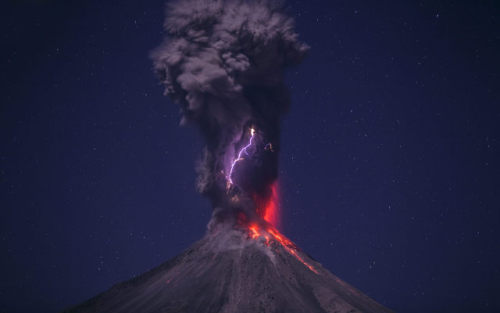
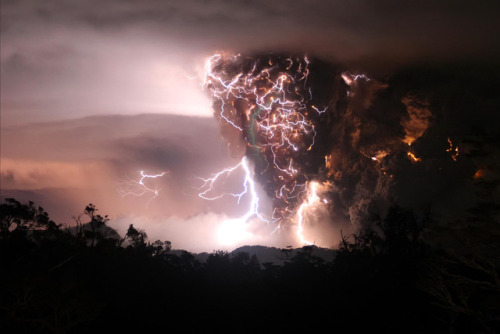
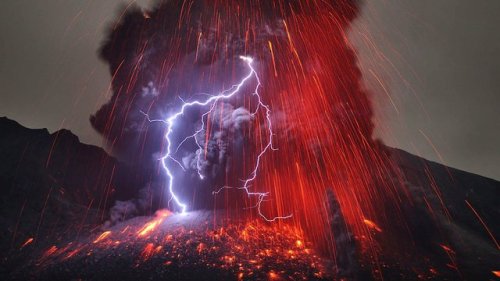
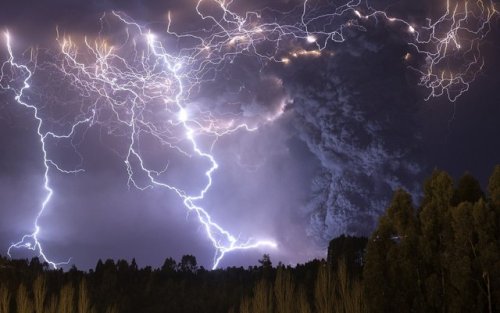
Dirty thunderstorm
A dirty thunderstorm (also volcanic lightning, thunder volcano) is a weather phenomenon that is related to the production of lightning in a volcanic plume.
A study in the journal Science indicated that electrical charges are generated when rock fragments, ash, and ice particles in a volcanic plume collide and produce static charges, just as ice particles collide in regular thunderstorms.
Volcanic eruptions are sometimes accompanied by flashes of lightning. However, this lightning doesn’t descend from storm clouds in the sky. It is generated within the ash cloud spewing from the volcano, in a process called charge separation.
source
images
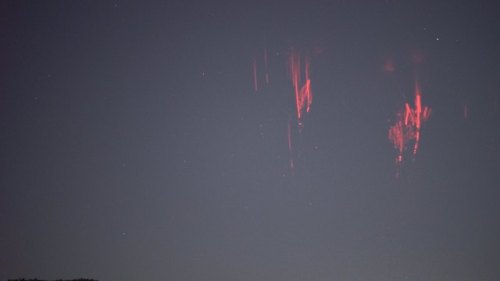
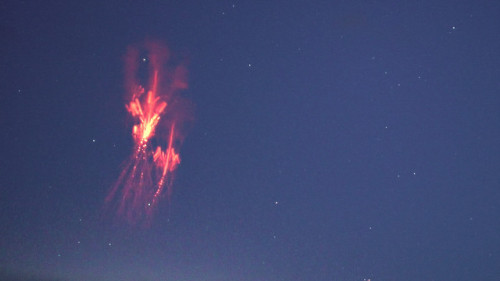
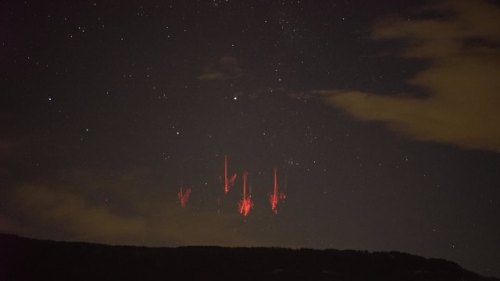
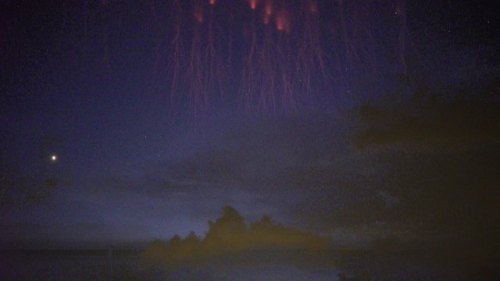
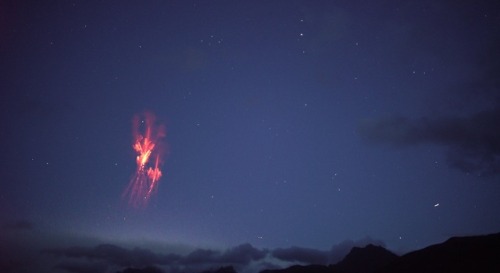
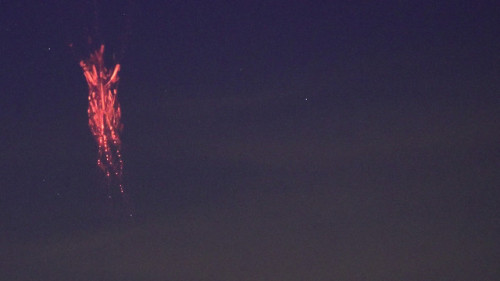
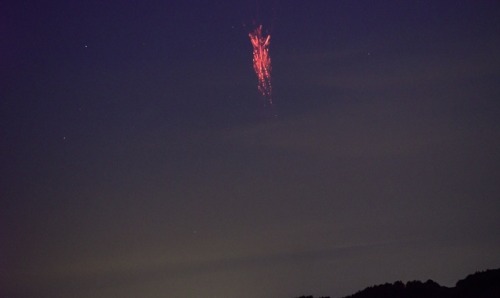
Sprite (lightning)
Sprites or red sprites are large-scale electrical discharges that occur high above thunderstorm clouds, or cumulonimbus, giving rise to a quite varied range of visual shapes flickering in the night sky. They are usually triggered by the discharges of positive lightning between an underlying thundercloud and the ground.
Sprites appear as luminous reddish-orange flashes. They often occur in clusters above the troposphere at an altitude range of 50–90 km (31–56 mi). Sporadic visual reports of sprites go back at least to 1886, but they were first photographed on July 6, 1989 by scientists from the University of Minnesota and have subsequently been captured in video recordings many thousands of times.
Sprites are sometimes inaccurately called upper-atmospheric lightning. However, sprites are cold plasma phenomena that lack the hot channel temperatures of tropospheric lightning, so they are more akin to fluorescent tube discharges than to lightning discharges. source, images

-
 fanartofthelostcities liked this · 5 years ago
fanartofthelostcities liked this · 5 years ago -
 smallfryingpan liked this · 5 years ago
smallfryingpan liked this · 5 years ago -
 16fahri liked this · 5 years ago
16fahri liked this · 5 years ago -
 queen-of-alagaesia liked this · 5 years ago
queen-of-alagaesia liked this · 5 years ago -
 thunderapache-blog reblogged this · 5 years ago
thunderapache-blog reblogged this · 5 years ago -
 thunderapache-blog liked this · 5 years ago
thunderapache-blog liked this · 5 years ago -
 breakingliketechno liked this · 5 years ago
breakingliketechno liked this · 5 years ago -
 michigandrifter liked this · 5 years ago
michigandrifter liked this · 5 years ago -
 the-human-sharpie liked this · 5 years ago
the-human-sharpie liked this · 5 years ago -
 mmuehlfeld-blog liked this · 5 years ago
mmuehlfeld-blog liked this · 5 years ago -
 indiewalk liked this · 5 years ago
indiewalk liked this · 5 years ago -
 fagdykefrank liked this · 5 years ago
fagdykefrank liked this · 5 years ago -
 prince-of-places liked this · 5 years ago
prince-of-places liked this · 5 years ago -
 awesomeheatherd reblogged this · 5 years ago
awesomeheatherd reblogged this · 5 years ago -
 awesomeheatherd liked this · 5 years ago
awesomeheatherd liked this · 5 years ago -
 red-rocket-pilot liked this · 5 years ago
red-rocket-pilot liked this · 5 years ago -
 fallen-seraphim-srp liked this · 5 years ago
fallen-seraphim-srp liked this · 5 years ago -
 he-le124 liked this · 5 years ago
he-le124 liked this · 5 years ago -
 eastern-wind liked this · 5 years ago
eastern-wind liked this · 5 years ago -
 julian-is-tired liked this · 5 years ago
julian-is-tired liked this · 5 years ago -
 omgaleksandrus liked this · 5 years ago
omgaleksandrus liked this · 5 years ago -
 heavenarcade reblogged this · 5 years ago
heavenarcade reblogged this · 5 years ago -
 azadanand618-blog liked this · 5 years ago
azadanand618-blog liked this · 5 years ago -
 chris-jess-tyler0-0 liked this · 5 years ago
chris-jess-tyler0-0 liked this · 5 years ago -
 leozaduski liked this · 5 years ago
leozaduski liked this · 5 years ago -
 marcevampqueen liked this · 5 years ago
marcevampqueen liked this · 5 years ago -
 artfanatic263 liked this · 5 years ago
artfanatic263 liked this · 5 years ago -
 severeknightthingsalad-blog liked this · 5 years ago
severeknightthingsalad-blog liked this · 5 years ago -
 stickypursepsychicdonkey-blog liked this · 5 years ago
stickypursepsychicdonkey-blog liked this · 5 years ago -
 fishareriverstars liked this · 5 years ago
fishareriverstars liked this · 5 years ago -
 smokis2 liked this · 5 years ago
smokis2 liked this · 5 years ago -
 bxgin16-blog liked this · 5 years ago
bxgin16-blog liked this · 5 years ago -
 kertbet liked this · 5 years ago
kertbet liked this · 5 years ago -
 pandapoop liked this · 5 years ago
pandapoop liked this · 5 years ago -
 blaqbatman liked this · 5 years ago
blaqbatman liked this · 5 years ago -
 milkywayan reblogged this · 5 years ago
milkywayan reblogged this · 5 years ago -
 uber-peep liked this · 5 years ago
uber-peep liked this · 5 years ago
